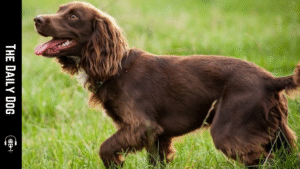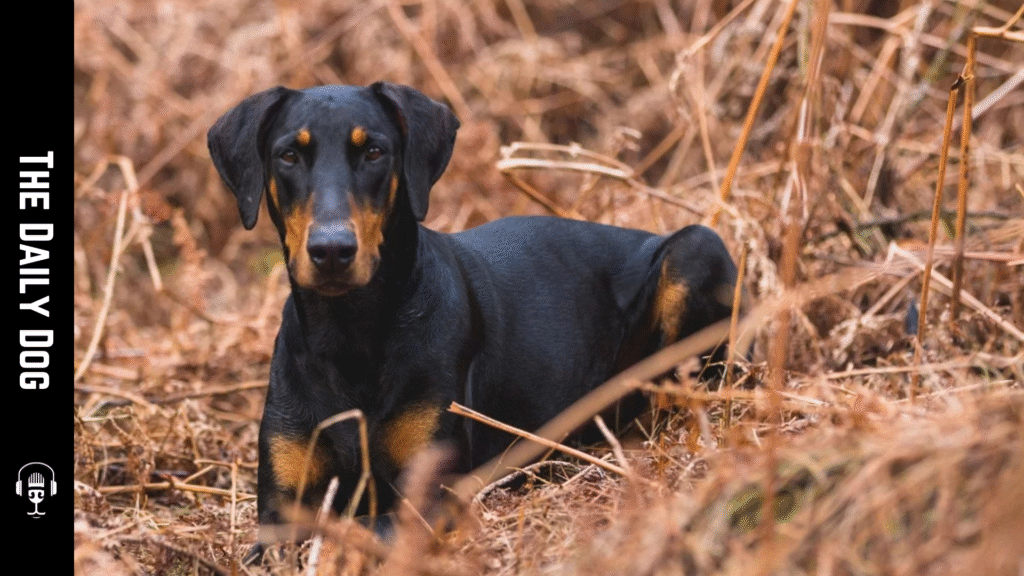In the rugged valleys and pine-scented uplands of the Balkan range, a distinctive scent hound quietly works: the Montenegrin Mountain Hound. Built for endurance, suited to steep terrain, and celebrated for an unyielding sense of tracking and companionship, this breed embodies a unique blend of purpose-driven instinct and family-oriented affection. For the hunter who values reliability in the field and a calm, steady presence at home, the Montenegrin Mountain Hound offers a compelling profile worth understanding in depth. This article explores the breed’s origins, temperament, care requirements, training approach, and the role this dog can play in modern homes—from rural estates to active urban households that value outdoor recreation.
Origins and historical function
The Montenegrin Mountain Hound traces its lineage to the rugged landscapes of Montenegro, a region where mountain air, terraced meadows, and dense forests shape the work of a practical scent hound. Historically, this breed evolved to work in challenging terrain, using a keen nose, sturdy legs, and a steady drive to follow scent trails across alpine slopes and foothills. Hunters and gamekeepers relied on the Montenegrin Mountain Hound to locate and trail game in conditions that demanded stamina, patience, and resilience. The breed’s design reflects this utilitarian purpose: a compact, muscular frame, a well-developed sense of smell, and a calm, determined demeanor that remains effective in long days of tracking.
In contemporary settings, the Montenegrin Mountain Hound has moved beyond strictly utilitarian roles. While many fanciers continue to value its field capabilities, the breed is increasingly appreciated for its temperament, trainability, and companionship. For responsible owners, this dual identity—an efficient worker in the field and a devoted family member at home—defines the breed’s appeal. Understanding the Montenegrin Mountain Hound’s heritage helps owners set realistic expectations about activity needs, grooming, and training priorities.
Physical characteristics and presence
The Montenegrin Mountain Hound presents a balanced, athletic silhouette that speaks to its working heritage. Its coat is typically short to medium in length, designed to be low-maintenance in rugged environments. Color patterns commonly include white with black or tan markings, though variations may occur. The breed’s head carries a calm, focused expression, with eyes that reflect intelligence and a nose that can pick up even faint scents in breezy, high-altitude air. Ears are usually medium-sized and set in a way that facilitates a steady, unimpressed gaze over long distances.
In terms of size, the Montenegrin Mountain Hound is robust enough to navigate steep terrain but not so large as to be unwieldy in smaller living spaces. Its limbs are powerful without being excessive, giving it the ability to traverse rocky slopes, switchback trails, and forest clearings with confidence. The tail, often carried with a gentle curve, signals alertness and balance, especially when the dog is tracking a scent or moving through uneven ground. This combination of build and presence helps the Montenegrin Mountain Hound perform its traditional tasks while remaining an adaptable companion for active households.
Temperament: the mind of a tracker and the heart of a family dog
One of the Montenegrin Mountain Hound’s most admired traits is its temperament. In the field, the dog is patient and methodical, exhibiting the kind of unwavering focus that makes it an effective tracker. The scent-driven instinct is a driving force—yet it is disciplined by a mature, even-tempered disposition that softens when the dog is in a relaxed domestic setting. This blend of independence and affection makes the Montenegrin Mountain Hound well-suited to environments where quiet, purposeful work is valued and where the dog can spend time with family when not outdoors.
In the home, the breed tends to form strong bonds with its people. It is typically loyal, gentle with children when properly socialized, and reserved with strangers until it perceives no threat. This thoughtful temperament is reinforced by consistent training and positive reinforcement. While the Montenegrin Mountain Hound is not typically an ultra-high-energy dog in every moment, it does require regular exercise to satisfy its physical needs and to keep behavioral energy in balance. Without sufficient activity, even the most disciplined tracking hound can become restless or overly vocal, which underscores the importance of structured routines and mental engagement.
Training and exercise: channels for instinct and energy
Training a Montenegrin Mountain Hound is most successful when it respects the dog’s instinctive drive and natural intelligence. Because this breed evolved as a tracker, scent work and nose-targeted activities are particularly effective ways to engage its mind. Structured scent games, trail work, and scent discrimination exercises can provide mental stimulation while reinforcing desirable behaviors. Positive reinforcement training—praise, food rewards, and play—works well with the Montenegrin Mountain Hound and helps build a strong, cooperative relationship between dog and owner.
Socialization from a young age is essential. Exposing the dog to a variety of environments, people, and other dogs in controlled settings helps prevent shyness or wariness, especially in busy outdoor areas. Consistent rules and boundaries should be established early, as the breed’s intelligence and independence can translate into stubborn streaks if rules are unclear. A calm, firm leadership style—paired with frequent short training sessions rather than long, inconsistent ones—tends to produce the best results.
Exercise needs are significant, reflecting the breed’s mountain heritage. Daily walks, plus longer adventures that include varied terrain, are ideal. In addition to physical exercise, mental workouts that simulate tracking tasks can help keep the Montenegrin Mountain Hound engaged and prevent boredom-based behaviors. Owners who enjoy outdoor activities such as hiking, trail running, or mountain biking will often find this breed to be an enthusiastic and compatible partner, provided the dog is trained to respond to recall and control cues in potentially distracting environments.
Grooming and health considerations
Grooming for the Montenegrin Mountain Hound is straightforward, which aligns with its rugged heritage. A short to medium-length coat requires routine brushing to remove loose hair and reduce shedding, especially during seasonal changes. Regular ear checks and dental care contribute to ongoing health and comfort. While the breed’s coat is relatively low-maintenance, owners should stay mindful of outdoor exposure in harsh weather, ensuring the dog has adequate shelter, a warm bed, and protection from extreme temperatures when needed.
Health-wise, prospective owners should seek a breed-appropriate health screening plan with a qualified veterinarian. Common considerations for many hound-type breeds can include hip and elbow dysplasia, joint issues, and potential sensitivities to certain foods or environmental conditions. Responsible breeders often screen for these conditions, and adopting a Montenegrin Mountain Hound from a reputable source who prioritizes health testing is a prudent step. Regular veterinary checkups, a balanced diet, weight management, and appropriate exercise all contribute to a long, active life.
Living with a Montenegrin Mountain Hound: practical tips
- Space and environment: The Montenegrin Mountain Hound does well in homes with access to outdoor space, whether a yard or frequent trips to parks and trails. Even in city living, a couple of long daily outings plus a dedicated play or scent-work session can satisfy its physical and mental needs.
- Training consistency: Consistency in training is essential. Short, frequent practice sessions align with the dog’s attention span and help reinforce reliable recall, which is especially important if the dog spends time near roads or busy areas during outdoor activities.
- Social structure: Create a positive social routine that balances supervised interaction with family members, visitors, and other dogs. Early socialization reduces the likelihood of anxious or reactive behavior in new environments.
- Diet and weight management: A balanced diet tailored to activity level helps maintain joint health and overall energy. Monitor weight and adjust portions as needed, particularly if the dog’s exercise intensity varies with seasons or outdoor pursuits.
- Outdoor safety: When exploring mountains or forests, keep the dog leashed in areas with wildlife or under conditions that require close supervision. The Montenegrin Mountain Hound’s keen sense of smell can lead to extended tracking efforts, so secure recall training is essential in open spaces.
The breed in today’s world: companionship, work, and versatility
As modern lifestyles evolve, the Montenegrin Mountain Hound has found a niche that suits active families, outdoor enthusiasts, and dedicated hunters. Its combination of field efficacy and domestic warmth offers a versatile profile that resonates with those who value both purpose and companionship. The dog’s quiet strength, its calm demeanor in the home, and its enthusiasm for outdoor exploration create a strong bond with owners who invest time in training, exercise, and enrichment.
For families, the Montenegrin Mountain Hound can become a loyal confidant who accompanies children on weekend adventures, serves as a patient playmate, and remains a steady presence during routine daily life. For outdoor enthusiasts and hunters, the breed’s natural tracking ability can enhance field experiences, provide companionship during long treks, and contribute to a shared sense of adventure. The breed’s adaptability—paired with conscientious care and responsible ownership—helps ensure a rewarding relationship that honors the dog’s instincts and its family’s needs.
Choosing a Montenegrin Mountain Hound: what to consider
If you’re contemplating adding a Montenegrin Mountain Hound to your family, approach the decision with clarity about what the breed requires and what you can offer in return. Here are key considerations to guide your decision:
- Activity level: Do you lead an active lifestyle that can accommodate long hikes, trail runs, or mountain outings? The breed thrives on meaningful outdoor activity and purposeful work.
- Living space: Is your home or property well-suited to outdoor exploration and safe, contained space where the dog can play and rest?
- Time and commitment: Training and socialization require daily attention. Are you ready to invest consistent time and energy to nurture a well-behaved, confident dog?
- Local regulations and terrain: If you live in an urban setting, plan for regular escapes to green spaces. In mountainous areas, ensure you have access to varied terrain and safe trails for training and exercise.
- Breeder selection: Seek responsible breeders who provide health clearances, socialization, and firsthand information about lineage and care needs. If adopting from a rescue or shelter, engage with the staff to understand the dog’s temperament, history, and needs.
The Montenegrin Mountain Hound in the broader canine landscape
Within the broader spectrum of scent hounds and mountain breeds, the Montenegrin Mountain Hound carries a distinctive identity. It blends ancient hunting traditions with a modern expectation of canine companionship. Its strength lies not only in its nose and stamina but also in its capacity to form lasting, meaningful relationships with people. For owners who appreciate a dog that is both capable in demanding terrain and affectionate in the home, this breed offers a compelling combination that stands out in communities that value resilience, loyalty, and intelligent, independent work.
Further enriching the breed’s story is the emphasis on responsible ownership and community education. Prospective owners can benefit from engaging with breed clubs, training groups, and experienced guardians who can share practical insights about exercise regimens, health considerations, and effective training strategies. This collaborative approach helps sustain a breed that has, for generations, thrived in challenging environments while remaining a cherished member of a family circle.
Closing thoughts: a life of purpose, balance, and trusted companionship
The Montenegrin Mountain Hound embodies a unique balance of rugged endurance and sensitive companionship. Its mountain-born instincts are as much a part of its character as its gentle, steady presence indoors. For families and individuals who want a dog that can excel in outdoor pursuits while offering steadfast companionship at home, this breed presents a meaningful option. The key to unlocking its full potential lies in aligning care, training, and lifestyle with the dog’s natural tendencies: to track, to endure, and to connect deeply with the humans who care for it.
If you are prepared to commit to an active, mentally engaged life with a devoted partner by your side, the Montenegrin Mountain Hound can become more than a pet—it can become a trusted ally in your adventures and a beloved member of your family. With thoughtful breeding choices, consistent training, and daily opportunities to explore in the mountains or the local countryside, this remarkable breed continues to thrive in the hands of responsible guardians who value character, capability, and the quiet dignity that defines the Montenegrin Mountain Hound.
We offer a FREE Strategy Call.
Click on the graphic to learn more
Read More










